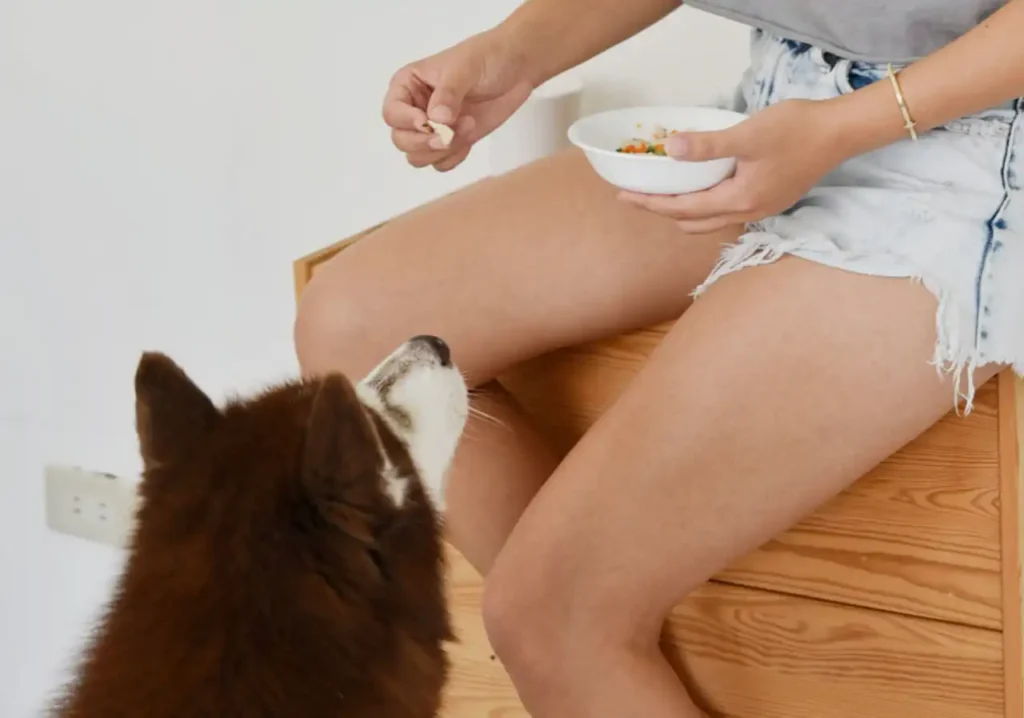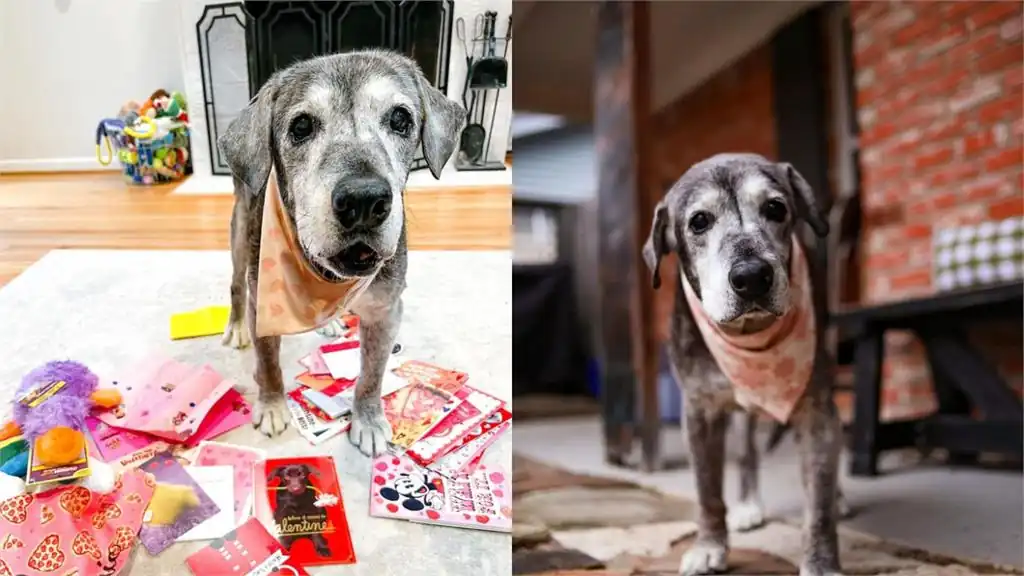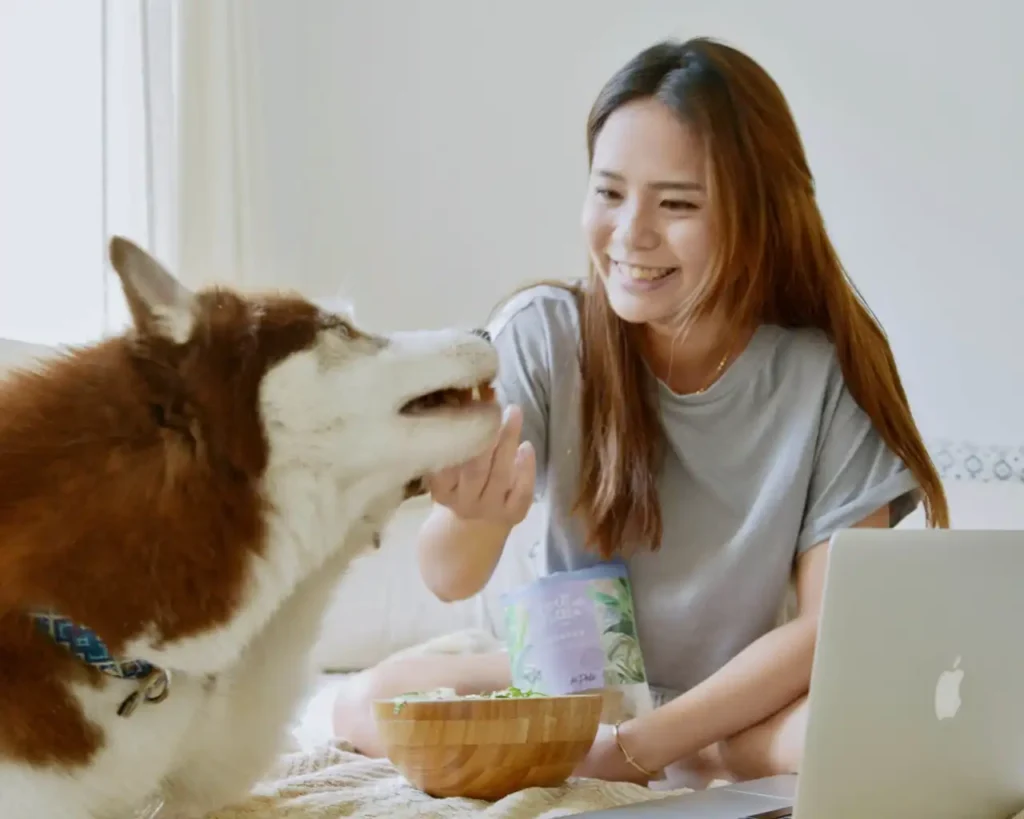Aging brings physical changes, and so does the diet!

Why do dogs need to change to a senior dog diet when they get older? Wu Yiru said at the outset, because the body of the old dog will gradually weaken, if there is no dietary adjustments, the organs may degenerate or fail faster in the long term; if there are chronic diseases, it will also be more difficult to control.
Aging makes the dog’s metabolism slow down and body organs degenerate, so the diet naturally needs to be changed to meet the physiological needs; what’s more, when the dog suffers from the common diseases of old dogs, such as diabetes mellitus, kidney disease, heart disease, arthritis, etc., the dog needs to adjust the diet to slow down the deterioration of the disease.
The signs of aging are all too common in dogs!

The timing of a dog’s aging varies depending on breed, size, and lifestyle, with large dogs becoming seniors earlier and small dogs later. When the dog is about 6 or 7 years old, the owner should start to pay attention to the signs of aging!
Signs of aging that owners can observe from the outside:
Clouding of the eyes: Old dogs’ eyes may look cloudy due to nuclear sclerosis or cataracts in the crystals of the eyes.
Lack of teeth: old dogs often have periodontal disease or tooth loss, owners may find that their dogs’ eating speed slows down, their appetite deteriorates, or the feed falls out of their mouths when they eat.
Dull coat color: The coat of an old dog will become less shiny, and in dark-colored old dogs, whitening of the coat can be clearly observed.
Decreased mobility: Older dogs sleep longer and are less active.
Loss of weight: Chronic illnesses, oral problems leading to loss of appetite, or joint degeneration leading to hypermuscularity are some of the factors that can cause an old dog to lose weight in an unhealthy way!
In addition to appearance, there are many physical changes that occur in older dogs:
Digestive system: Older dogs have slower gastrointestinal motility and fewer gastrointestinal bacteria, which can lead to indigestion, constipation, or flatulence.
Brain deterioration: Due to the oxidizing effect on the brain, some old dogs may develop cognitive impairment, also known as Alzheimer’s disease. Owners may notice a decrease in their dog’s reflexes, forgetfulness of past actions, behavioral changes, and changes in bowel habits.
Heart problems: When dogs have heart problems, they may cough, wheeze easily, lose mobility and become lethargic. For example, some small dog breeds are prone to heart valve degeneration as they age.
Decreased kidney function: With different degrees of kidney failure, old dogs may show symptoms such as decreased appetite, thirst, nausea and vomiting.
Endocrine problems: A common problem in old dogs is atrophy of the thyroid gland. This can lead to decreased mobility, lethargy, dark spots due to melanin deposits, loss of coat luster, and even symmetrical hair loss on both sides of the body.
Nutritional Requirements for Senior Dogs: Eat well and exercise well to be healthy!

Older dogs with slower metabolisms and lower activity levels do require fewer calories than younger dogs, but the common refrain is “too few! But it is often said that it is “too low! Wu Yiru emphasized that the early concept that the activity level of the old dog is reduced, the diet should also be adjusted down to avoid obesity; but now the concept is to provide adequate nutrition for the old dog, to avoid the dog into the vicious cycle of “eating poorly, do not want to move”.
The appetite of old dogs and their gastrointestinal digestion and absorption have deteriorated, so owners should prepare well-digested and nutritious food, so that old dogs can get enough calories and protein, plus appropriate exercise to maintain the muscle mass of old dogs!
Calorie Requirements for Older Dogs:
Resting Energy Requirements (RER) is the basic amount of energy needed to maintain basic body functioning, assuming the dog sleeps all day and does not move.
Formula: RER (kcal/day) = Body Weight (kg) 0.75 × 70
Daily Energy Requirements (DER) are based on the RER and are adjusted according to the dog’s age, condition and activity level.
Formula: DER (kcal/day) = RER × appropriate multiplier
In general, the daily energy requirement of an elderly dog is about 1.2 to 1.4 times the RER, which is then adjusted according to the dog’s fatness, muscle mass and activity level, etc. For example, a 16kg old dog should have a daily energy requirement of 1.2 to 1.4 times the RER. For example, the daily calorie requirement for a 16kg old dog is 672kcal, which is calculated as 160.75 × 70 × 1.2 = 672kcal (1.2 times).
Dietary considerations for senior dogs:
High-quality protein: The proportion of protein in an old dog’s diet should be higher than that of a young dog. Choose well-digested and well-absorbed proteins to prevent the dog from wasting away due to muscle loss and weight loss.
Adequate water: Provide old dogs with sufficient and clean drinking water to minimize the risk of chronic kidney disease due to dehydration.
Low sodium: Compared with young dogs, old dogs need to pay more attention to sodium intake to reduce the burden on the heart and kidneys.
Add nutritional supplements: Nutritional supplements can be added depending on the condition and needs of your dog. For example, dietary fiber can increase gastrointestinal motility, and antioxidants can slow down organ aging.
Consider disease factors: For example, dogs with kidney disease should limit protein intake, dogs with heart disease should pay attention to sodium intake, and dogs with pancreatitis should follow a low-fat diet.
Exercise: Allow your dog to exercise properly to maintain muscle mass and avoid sarcopenia or obesity caused by eating without exercising.
Must Take Supplements for Old Dogs? How to choose nutritional supplements?
With a well-balanced diet, there is no need to provide additional nutritional supplements for dogs. However, nutritional supplements can prevent disease and slow down the deterioration of the disease. Wu Yiru said, there are many studies have proved that nutritional supplements are beneficial to senior dogs, but not necessarily the more you take it, the healthier you are, it must be used for different conditions, and veterinarians will be based on the dog’s health status and the breed’s prevalence of disease to give advice to the owner.
For example:
For dogs suffering from degenerative arthritis, glucosamine, chondroitin and green lipped scallops can be used to help alleviate the condition.
For dogs with flatulence or constipation, probiotics and dietary fiber can be added to the diet.
Shiba Inu, a breed with a high incidence of cognitive impairment, can be given fish oil, vitamin A and other antioxidant supplements at the age of 6 or 7 to slow down brain oxidation and prevent Alzheimer’s. Small dogs, which are prone to heart disease, can also be given antioxidant supplements.
Small dogs that are prone to heart disease can be supplemented with taurine and Q10.
How to prepare meals for an old dog at home?

Protein: Each type of meat has its own benefits. For example, lamb is rich in iron and vitamins A and B complex, fish is better digested and absorbed than other meats, and chicken is low in fat and high in protein, which makes it a good choice when you want to supplement with high quality protein.
Fats: Triglycerides are a good source of energy, while Omega-3 and Omega-6 fatty acids contain essential fatty acids that your dog’s body cannot produce on its own. Animal oils provide high levels of triglycerides, fish oils and flaxseed oils are rich in Omega-6 fatty acids, and vegetable oils such as canola, corn and soybean oils are high in Omega-3 fatty acids. Regardless of the blend, the point is to provide your dog with adequate amounts of triglycerides and essential fatty acids, and the right ratio of Omega-3 and Omega-6 fatty acids.
Carbohydrates: Carbohydrates, or sugars, are a good source of energy, but be careful not to overdo it to avoid obesity. Try to choose carbohydrate sources that are well digested and well absorbed. For example, NFE (Nitrogen Free Extract), which may be emphasized on some feed packages, is a digestible carbohydrate.
Fiber: Fiber, which can come from vegetables or grains, provides a sense of fullness and can even help regulate blood sugar. Additionally, older dogs with weakened stomachs will want to increase the amount of dietary fiber in their diets to help with bowel movements.
Ash: Think of the ash content written on the package as a mineral. If it is labeled, the calcium-to-phosphorus ratio is about 1:1 to 2:1, while sodium is 0.15 to 0.3%, so try not to allow more than 0.3% sodium in your dog’s diet!
In addition to purchasing commercial dog food, Wu Yiru reminds owners who cook fresh food on their own that since it is difficult to estimate the nutrient composition of fresh food, it is recommended that owners avoid toxic foods that dogs cannot eat, and prepare the rest of the ingredients from scratch or add extra vitamins and other nutrient supplements to avoid unbalanced nutrition for dogs in the long run.
Whether it is feed or fresh food, as the health condition of each old dog is different, as long as it meets the needs of your old dog, it is the perfect diet!
How to feed an old dog at home?

Small and frequent meals: As the gastrointestinal condition of old dogs deteriorates, they can be fed small and frequent meals to increase the absorption of nutrients.
Exercise: Exercise can promote gastrointestinal peristalsis and increase the appetite of old dogs!
Reduce snacks: For old dogs, the sodium content of snacks may be too high, and snacks will affect the appetite of regular meals, so reduce them as much as possible!
Reprocessing food: For older dogs with poor teeth, offer softer textured food or break up the feed. Adding water to the food will improve the flavor and make it more palatable. For older dogs with poor eyesight or who are not feeling well, owners can try hand-feeding to encourage them to take in enough food.
Separate water and food: Large dogs or deep-chested breeds need to be protected from large amounts of water and food, which can cause stomach distention or even gastric torsion!
Care for the older dogs in your family with food and drink!
Wu Yiru understands that every dog is a family member, and physical aging is a condition that we all encounter. What owners can do is to give their dogs proper care, focusing on their dietary conditions, home environment, and some details to make adequate preparations to help prevent some of the inconveniences caused by aging in advance.
Diets for senior dogs are designed to meet the needs of old dogs by providing nutritious and absorbable diets to ensure that old dogs get enough calories, and supplementing antioxidants or dietary fiber, and switching to a low-sodium diet, etc., as appropriate, to help old dogs maintain good health, and even fight against diseases. Finally, Wu Yiru reminds owners to give more care and companionship to their old dogs, and specifically to do a health check, which is believed to be the best way to let the dog age easily and healthily!
